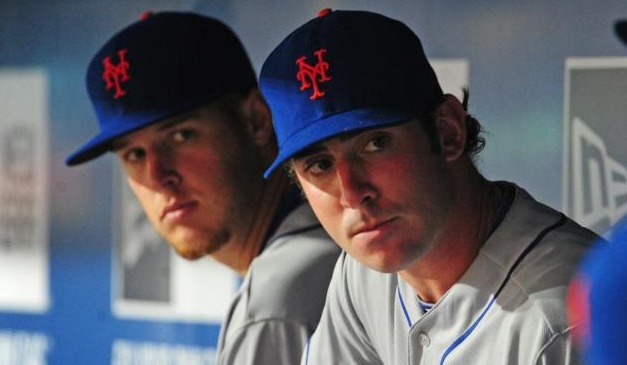
Justin asks…
Why are the Mets always babying their pitchers? It’s not like any of these inning caps and pitch counts have resulted in fewer injuries. Look at Matz and Fulmer and Mejia just this year alone. I just don’t get this obsession. Nobody worried about these things with Tom Seaver, Jerry Koosman, Nolan Ryan and Jon Matlack and all four had great careers. Ron Darling complains about it all the time and he’s supposed to be our expert analyst, right? So what gives?
Joe D. replies…
Thanks for your question, Justin…
I can’t argue with the long and mostly healthy careers of the Mets pitchers you cited, but this new philosophy of trying to protect a young pitcher is not unique to the Mets and is an MLB-wide focus and it begins in the lowest levels of the minors.
I don’t really have a problem with safeguarding these young arms in the minors and trying to minimize any injuries to their arms. When you’re just 17-22 years old, there should be some checks and balances in place to keep from taxing them at so young an age.
I have a bigger problem with it when your 25 or older as in the case of Jacob deGrom, who isn’t even a hard thrower to begin with. The type of pitcher you are should matter and flame-throwers should be handled differently than pitchers who rely mostly on breaking balls and changeups.
One pitching coach told me that from the day a kid gets drafted or signed from the International arena, there is a progression these younger pitchers go through not only from year to year, but also from game to game. They start off gradually, increasing their pitch counts from 50 and then rise 10-15% per outing. Some pitchers will get maxed out at 75 pitches, others 90-100, but not repetitively – especially in the lower levels.
One of the things the Mets and other organizations stress is being efficient so that you can go deeper into the game. In other words reducing the walks and not expending 7-10 pitches to get a batter out.
We’ve seen that contrast at play between Zack Wheeler and Jenrry Mejia before he was shut down. Wheeler himself in his last start told reporters he needed to stop focusing on striking batters out and running up his pitch counts and just pitch more efficiently.
The formula is simple said one pitching coach in the Washington Nationals’ system, “Throw the ball over the plate, force contact, and don’t walk people.” “If you throw six, seven, eight pitches per batter, you’re not going to be out there very long.”
You may recall the Nationals deciding to shut down their ace Stephen Strasburg last fall and not pitch in the post season. Some blamed their first round exodus on that decision. Was it the right call? Nobody really knows.
Many pitchers have been limited to 100 pitches, and many of them suffer arm injuries just as frequently as those who have no such limitations.
It may take another 10-15 years until we have enough data to prove whether or not these pitch limits have done anything scientifically conclusive to prove that they have extended the average careers of pitchers in the 2000’s than it did in the 80s and 90s.
So I can’t say emphatically that I agree or disagree with a system wide approach to this. I’m leaning toward disagreeing. I think limits should be done on a case by case basis. I see Matt Harvey and I see a workhorse who is built for endurance. I can’t say the same thing about Zack Wheeler. His wiry frame and unorthodox delivery makes him a great candidate for an innings cap.
I’m not a proponent of a one size fits all philosophy for pitchers or hitters… Each player is unique and altering what makes them unique just so it fits neatly into an organizational philosophy sometimes leads to a player regressing rather than improving.















